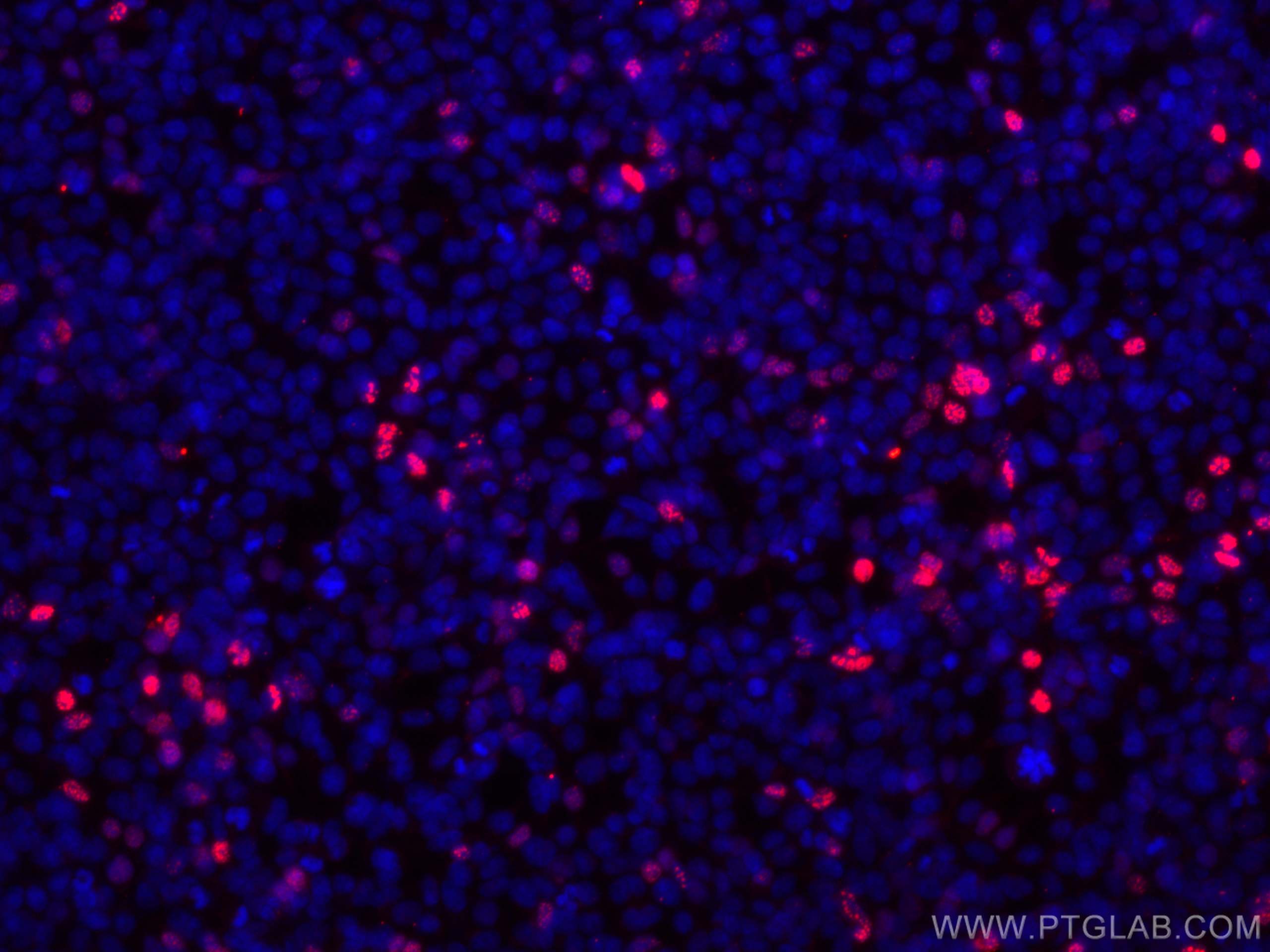Anticorps Monoclonal anti-HA Tag
HA Tag Monoclonal Antibody for IF
Hôte / Isotype
Mouse / IgG1
Réactivité testée
Protéine recombinante
Applications
IF
Conjugaison
CoraLite®594 Fluorescent Dye
CloneNo.
1F5C6
N° de cat : CL594-66006
Synonymes
Galerie de données de validation
Applications testées
| Résultats positifs en IF | cellules HEK-293 transfectées, |
Dilution recommandée
| Application | Dilution |
|---|---|
| Immunofluorescence (IF) | IF : 1:50-1:500 |
| It is recommended that this reagent should be titrated in each testing system to obtain optimal results. | |
| Sample-dependent, check data in validation data gallery | |
Informations sur le produit
CL594-66006 cible HA Tag dans les applications de IF et montre une réactivité avec des échantillons Protéine recombinante
| Réactivité | Protéine recombinante |
| Hôte / Isotype | Mouse / IgG1 |
| Clonalité | Monoclonal |
| Type | Anticorps |
| Immunogène | Peptide |
| Nom complet | HA Tag |
| Symbole du gène | |
| Identification du gène (NCBI) | |
| Conjugaison | CoraLite®594 Fluorescent Dye |
| Excitation/Emission maxima wavelengths | 588 nm / 604 nm |
| Forme | Liquide |
| Méthode de purification | Purification par protéine G |
| Tampon de stockage | PBS avec glycérol à 50 %, Proclin300 à 0,05 % et BSA à 0,5 %, pH 7,3. |
| Conditions de stockage | Stocker à -20 °C. Éviter toute exposition à la lumière. Stable pendant un an après l'expédition. L'aliquotage n'est pas nécessaire pour le stockage à -20oC Les 20ul contiennent 0,1% de BSA. |
Informations générales
Protein tags are a protein or peptide sequences located either on the C- or N- terminal of the target protein, which can facilitate solubility, detection, purification, localization, and expression of the target protein. The HA tag corresponds to amino acid residues YPYDVPDYA of a surface glycoprotein -human influenza virus hemagglutinin (HA). The HA tag is commonly used for a variety of research applications including chromatin immunoprecipitation, ELISA, flow cytometry, western blotting, immunocytochemistry/immunofluorescence among of others.
Protocole
| Product Specific Protocols | |
|---|---|
| IF protocol for CL594 HA Tag antibody CL594-66006 | Download protocol |
| Standard Protocols | |
|---|---|
| Click here to view our Standard Protocols |


